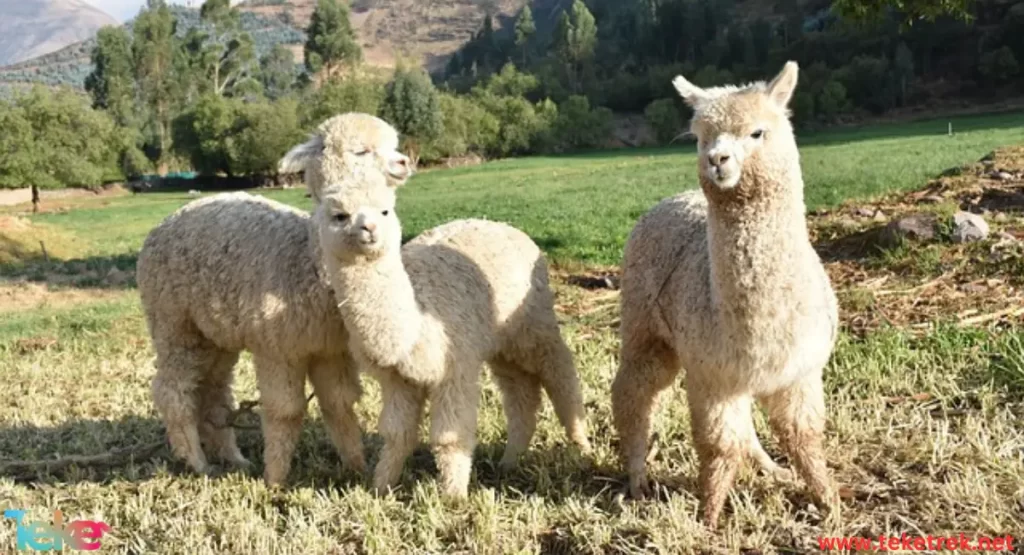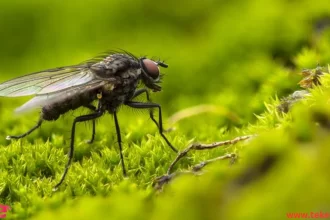The Alpacas are members of the camel family, domesticated by the inhabitants of the Andes Mountains in Peru thousands of years ago for food, fuel, and fibers.
Alpacas are highly valued around the world for their woolly coats, which are sheared to make warm, soft, and lightweight textiles.
Let’s explore more about these fascinating creatures from teke trek.

Physical Appearance of The Alpacas:
The Alpacas are hoofed animals, a group of large-hoofed mammals that includes sheep and giraffes.
- Alpacas belong to the chordate phylum, class Mammalia.
- Alpacas are characterized by their large bodies and legs, long necks, small heads, and medium-length slender tails.
- Female and male alpacas look similar, but males are larger and have more prominent canines and incisors.
- Alpacas feature a variety of coat colors, including white, black, beige, and many shades of brown and gray.
Habitats and Locations of Alpacas:
Although alpacas are bred in many places, including Australia, the United States, and the United Kingdom, their original habitat is the Andes Mountains, from Bolivia and Colombia to Peru, Ecuador, and Argentina.
However, today alpacas do not live in the wild but are raised on farms. Due to the rapid growth of their wool, they need to be sheared regularly, or else the wool can harm the alpacas’ health.
- In the United States, alpacas are often kept until their full age, which is usually around 20 to 25 years, to benefit from their wool.
- In Peru, alpacas are kept until the quality of their wool decreases, then they are slaughtered for their meat.
- Today, alpacas are farm animals that have become increasingly popular, especially for those who need a guard dog, as they are excellent at keeping predators away.
- Alpaca wool is used in fiber production, and in some regions, residents benefit from their skins and meat.
Diet of Alpacas:
- Alpacas need to be provided with enough food, and their diet mainly consists of grass and hay.
- Alpacas can be left to graze alone in pastures during seasons when grass is available.
- Alpacas do not require much health care, just some attention as they age.
Reproductive Stages of Alpacas:
In their original environment in the Andes Mountains, alpacas breed seasonally. Outside this range, they can breed year-round, According to the following stages:
- A male alpaca pursues a female until she indicates acceptance by sitting with her legs tucked under her in what is called the cush or kush position.
- Male alpacas become sexually mature at about two and a half years, while females reach maturity between 10 and 12 months.
- Pregnancy lasts on average 342 days but can last slightly over a year.
- However, pregnancy is not always obvious in alpacas, even at the end.
- Females give birth to a single offspring called a cria, which will walk shortly after birth.
- Most crias – 90 percent – are born during the day, weighing about 12 to 15 pounds, and are weaned at about six months of age.
- After weaning, young alpacas are known as weanlings until they reach maturity.
- At maturity, adult alpacas can live anywhere from 15 to 25 years, depending on various factors.

Frequently Asked Questions About Alpacas:
- What are alpacas?
It is a semi-domesticated hoofed mammal from the camelid family that lives in the high Andes of South America. It resembles a long-necked sheep, and also resembles a small llama.
- What is the average lifespan of an alpaca?
Surprisingly, these animals are long-lived and can live up to 25 years.
- Do alpacas make noise?
Alpacas are very quiet, easy-going animals, and make minimal noise. Alpacas emit a humming sound as a means of communication or to express concern or stress.
- Is it acceptable to have only one alpaca?
No, alpacas have very strong herd instincts and need the company of other alpacas to thrive, preferably three or more. Alpacas are livestock and should not be treated as household pets.
- Can alpacas thrive in very hot or very cold climates?
Generally, yes, alpacas are surprisingly adaptable animals and have successfully adapted to extreme hot and cold climates.
- How often are alpacas sheared?
Alpacas are sheared once a year, usually at the end of April
- Is alpaca a camel or sheep?
Alpaca is a camel.
- What is so special about alpaca?
The Alpacas are distinguished by their large bodies, legs and long necks, as well as small heads and fluffy tails of medium length.
In conclusion, the alpacas typically live up to about 20 years, although there are many factors involved. In Peru, they are often slaughtered at the age of ten for their meat when the quality of their wool begins to decline. In the United States, they may be allowed to live much longer because there is not a large market for alpaca meat there.





